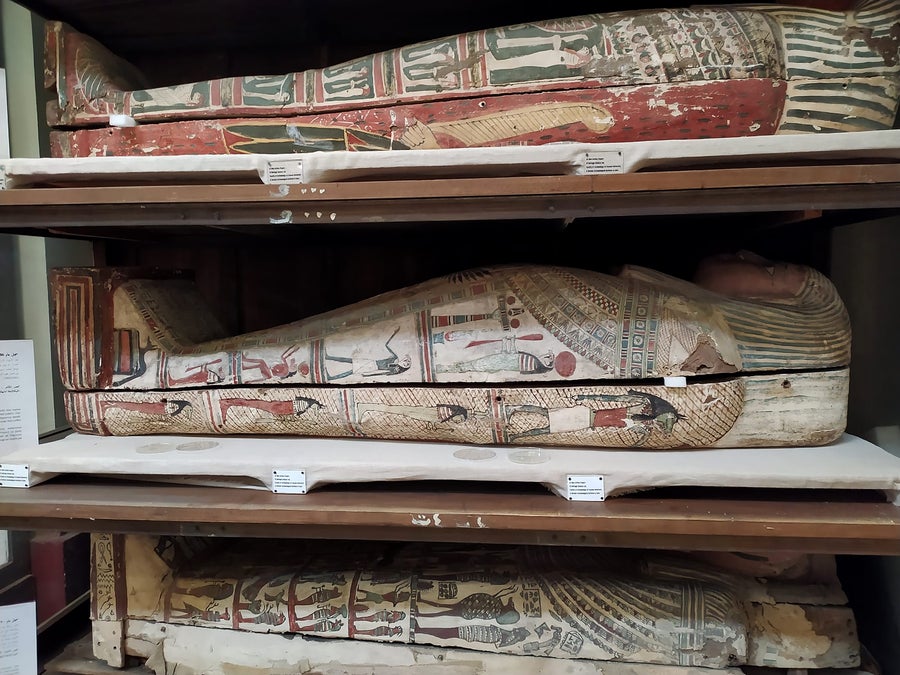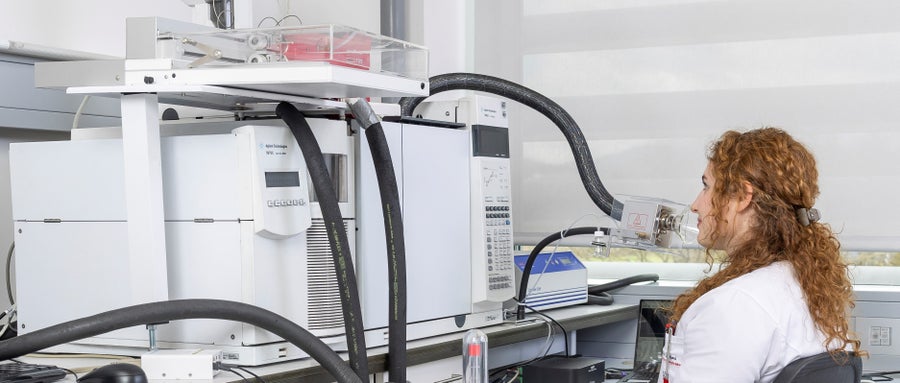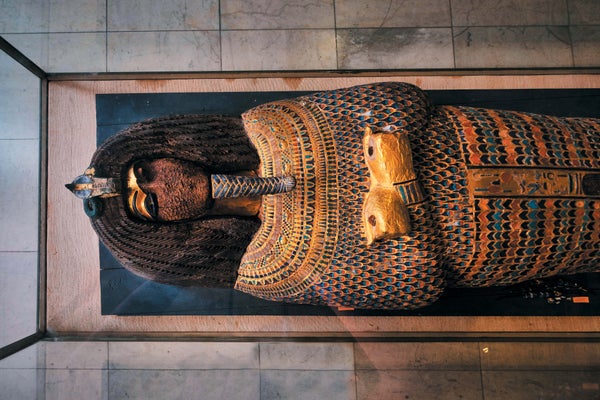If you were asked to describe the scent emanating from an ancient Egyptian mummy like you’d discuss a high-end perfume or the bouquet of a fine wine, you might mention fragrance notes of old linen, pine resin and citrus oils—with just a whiff of pest repellent.
These vivid comparisons stem from a new laboratory analysis of nine mummies from various social classes and historical periods, published in the Journal of the American Chemical Society. Researchers from Slovenia, England, Poland and Egypt collaborated with the Egyptian Museum in Cairo to identify more than 70 unique compounds from air samples taken around each mummy. The samples were chemically analyzed and also presented to specially trained human “sniffers,” who were asked to describe them with sensory adjectives. The team’s findings demonstrate how the study of smell can help to enrich our understanding of cultural artifacts such as mummies in a noninvasive way that includes local scientists.
The scientists vetted each candidate mummy to obtain a wide range of smells, says study co-author Abdelrazek Elnaggar of the University of Ljubljana in Slovenia. To collect smell samples, they placed small tubes around each mummy (being careful not to touch the fragile remains) to siphon off emitted gas molecules. The team used gas chromatography and mass spectrometry to identify the chemical compounds in the samples.
On supporting science journalism
If you're enjoying this article, consider supporting our award-winning journalism by subscribing. By purchasing a subscription you are helping to ensure the future of impactful stories about the discoveries and ideas shaping our world today.

A group of scientists trained people to people sniff a selection of the mummified bodies at the Egyptian Museum in Cairo to characterize the smell of these ancient artifacts.
Emma Paolin
Elnaggar and his colleagues trained a group of people, mostly museum employees, to identify particular materials used in mummification that could be associated with specific smells and to separate out smells that might be caused by museum infrastructure or conservation treatments rather than the mummies themselves. The mummies’ scent profiles were complex, but they were most often described as “sweet,” “woody” and “spicy.” The researchers hope to use the method on a larger set of mummies to better understand the varied mummification practices employed in ancient Egypt. “Different historical methods represent different materials used in mummification and also different quality of materials,” Elnaggar explains.
The earliest Egyptian mummies, dating back to roughly 5000 B.C.E.,formed when the remains of deceased individuals were buried in hot, dry sand and mummified naturally. People began using techniques for artificial mummification around 2700 B.C.E., and these practices were the most sophisticated in the New Kingdom period, which started around 1500 B.C.E. During that time, bodies received thorough treatment with a variety of oils and resins—potential sources of the “sweet” and “woody” scents detected in the study.
Some fragrance differences may also come from variations in mummification practices for people of different social classes. Across time, “individuals of high social status would be mummified with better-smelling or more intense—smelling natural extracts,” says study co-author Matija Strlič, an analytical chemist at the University of Ljubljana. For instance, Elnaggar adds, the bodies of pharaohs and other elites were treated with fresh natural salts and with resins derived from expensive herbs, whereas salts and other materials were reused multiple times for the bodies of people from poorer classes. In the study, the best-preserved mummy was in a coffin with a gilded mask; even though it was one of the oldest, it had a wide variety of odor compounds, many of which were found in higher concentrations than in the other mummies.

Emma Paolin, a Ph.D. researcher at the University of Ljubljana in Slovenia, smells the olfactory port of a gas chromatography/mass spectrometry instrument. The analyst describes the smell in terms of quality, intensity and hedonic tone.
Andrej Kriz/Faculty of Chemistry and Chemical Technology/University of Ljubljana
Using local conservators was a key part of this study, Elnaggar says, because they have a stake as caretakers of Egyptian cultural heritage and are exposed to the smell of artifacts in their work. This makes them well prepared to describe mummy scents for both researchers and casual museum visitors.
“Smell is very closely linked to the amygdala and hippocampus—areas in our brain that are responsible for processing memory and emotions,” says Barbara Huber, an archaeochemist at the Max Planck Institute of Geoanthropology in Jena, Germany, who was not involved in the new study but curated a 2023 exhibit on mummy scents in Denmark. Museums commonly display objects behind glass, Huber says, blocking access to smells that can be crucial to our understanding of historical narratives—especially for “an incredibly aromatic experience” such as mummification. According to Strlič, “In order to truly experience cultural heritage, we need to involve all our senses—because smells and sounds of heritage are inherent” in getting a full experience of the past.
Can we expect to grab a bottle of mummy perfume from the museum shop soon? The researchers say this idea might not be off the table. “Everyone would like to smell like ancient Egyptians: sweet, woody and spicy,” Elnaggar says. “What we’d like to do now is share our experience with museum visitors so they can enjoy it in an exhibition—and even take it home!”
A version of this article entitled “Sniff a Mummy” was adapted for inclusion in the July/August 2025 issue of Scientific American. This text reflects that version, with the addition of some material that was abridged for print.
